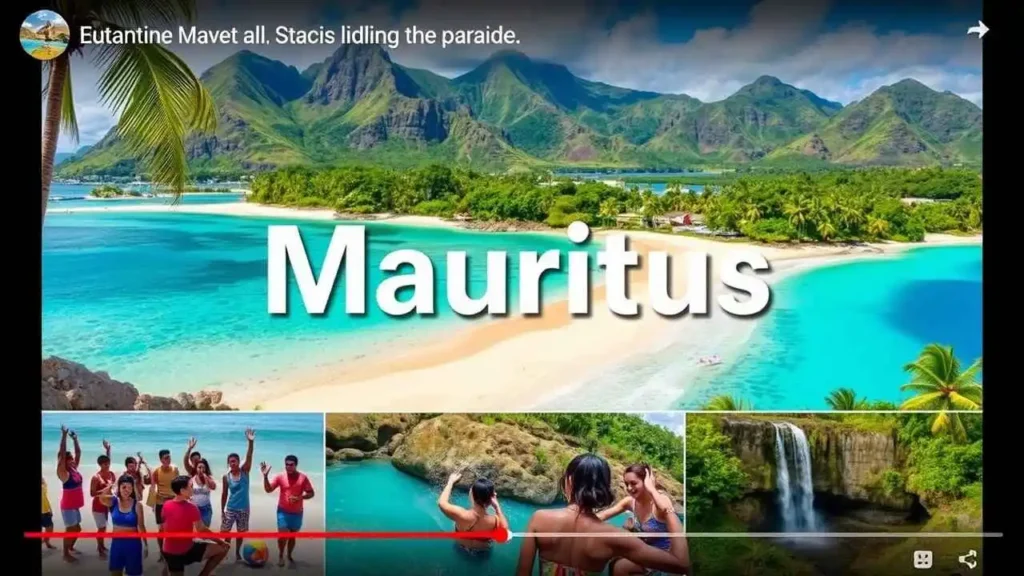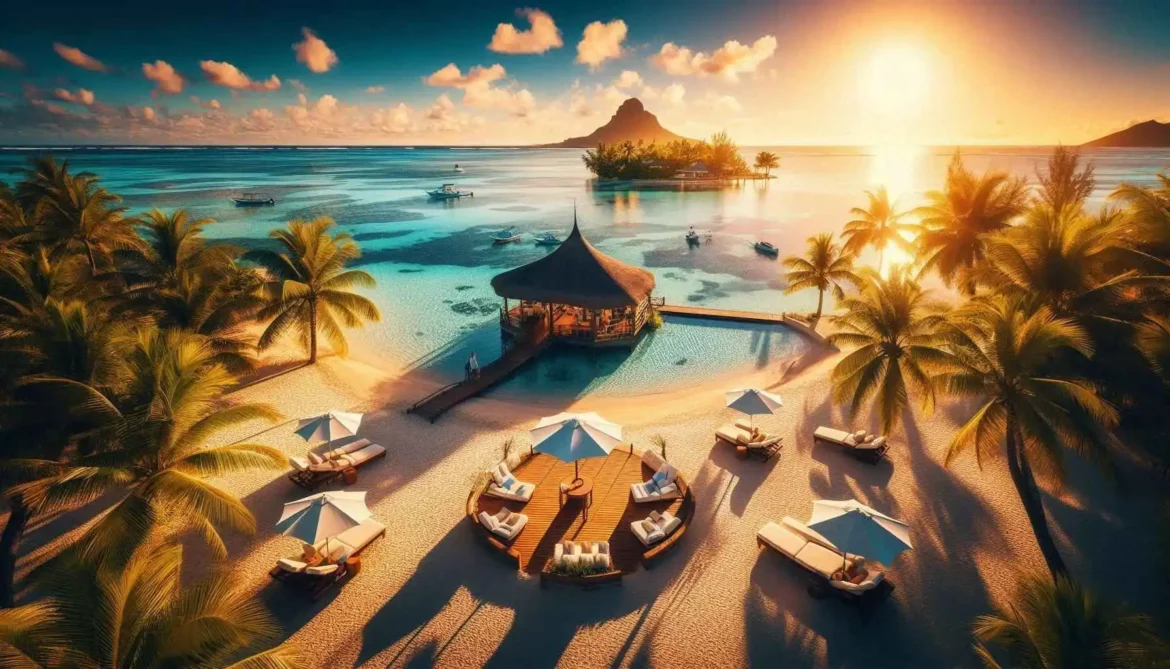
Plan Your Dream Trip to Mauritius – A Full Experience Awaits
From the moment our plane began its descent, the view of Mauritius was nothing short of breathtaking. A sapphire ocean fringing a vibrant green island, dotted with white sandy beaches – it was clear we were arriving somewhere special. Mauritius, a pear-shaped island nation in the Indian Ocean, southeast of Africa, is renowned for its stunning natural beauty, but we quickly discovered it offers so much more: a rich tapestry of cultures and an abundance of adventures waiting to be had. This guide chronicles our journey, sharing insights into why this tropical paradise captured our hearts.
Our first impression was the palpable sense of peace and tranquility that seemed to emanate from the island itself. Yet, beneath the surface of calm, turquoise waters and swaying palm trees lies a vibrant history and a dynamic present. Mauritius is a melting pot of cultures, a legacy of its colonial past and the diverse人々 (peoples) who came to call it home. This fascinating blend influences everything from the language spoken to the incredible array of culinary delights we sampled.
Getting There and Settling In
Flying into Sir Seewoosagur Ramgoolam International Airport (MRU) in the southeast of the island was straightforward. We had pre-booked a transfer to our accommodation, which we found to be a convenient and stress-free way to start our trip. Getting around Mauritius offers several options. We primarily used a combination of rental car for exploring at our own pace (remembering they drive on the left!) and local taxis for shorter trips or evenings out. The island’s bus network is extensive and very affordable, though routes can be indirect and travel times longer. For a truly local experience, taking a bus is a must, allowing us to see everyday life unfold outside the window.
Accommodation options are vast, from luxurious resorts lining the coasts to charming guesthouses and self-catering villas. We opted for a mix during our stay, experiencing the pampering of a beachfront resort and the authenticity of a smaller, locally run guesthouse inland. Both offered unique perspectives on island life.
Exploring the Island’s Natural Beauty
Mauritius lives up to its reputation as a tropical paradise. The coastline is dotted with countless beaches, each with its own unique charm. We spent days simply lounging on the sand, swimming in the clear waters, and soaking up the sun.
- Beaches: The west coast beaches like Flic en Flac offered stunning sunsets and calm waters perfect for swimming. Le Morne’s beach, framed by the iconic Le Morne Brabant mountain, was incredibly picturesque and a hub for kitesurfing. In the north, Trou aux Biches and Mont Choisy captivated us with their postcard-perfect stretches of white sand and gentle slopes into the sea. We also ventured to the more rugged southern coast, where powerful waves crashed against dramatic cliffs, offering a different, wilder kind of beauty.
- Inland Wonders: It’s a mistake to think Mauritius is only about beaches. The island’s interior is lush, mountainous, and home to incredible biodiversity. We dedicated a couple of days to exploring the Black River Gorges National Park. Hiking through the verdant trails, we were rewarded with panoramic views of gorges, waterfalls, and the chance to spot endemic birds like the Mauritius Kestrel or Pink Pigeon. The air was cooler here, filled with the scent of damp earth and tropical foliage.
- Unique Phenomena: A must-see natural wonder is the Seven Colored Earths in Chamarel. This geological oddity features sand dunes in distinct layers of seven different colors (red, brown, violet, green, blue, purple, and yellow), a result of mineral composition and volcanic activity. It’s a surreal and beautiful sight, especially captivating under the right light. Nearby, the Chamarel Waterfall cascades down a sheer cliff face, adding to the area’s natural spectacle.
“Mauritius was made first, and then heaven; and that heaven was copied after Mauritius.” – Mark Twain
We understood exactly what Twain meant as we gazed out at the diverse landscapes; it felt like a place where nature had shown off its full palette.
Immersing Ourselves in Mauritian Culture
The cultural landscape of Mauritius is as rich and varied as its natural scenery. Shaped by waves of immigration from Europe, Africa, India, and China, the island nation boasts a truly multicultural identity.
- A Tapestry of Heritage: We explored the capital city, Port Louis, a bustling hub where colonial architecture stands alongside modern buildings and vibrant markets. Walking through the Central Market was a feast for the senses – the aroma of spices, the colorful displays of fruits and vegetables, and the lively chatter of vendors gave us a real taste of local life. We visited the Aapravasi Ghat, a UNESCO World Heritage site in Port Louis, which served as the main immigration depot for indentured laborers primarily from India between 1834 and 1924. It’s a poignant reminder of the country’s history and the resilience of its people.
- Culinary Delights: Mauritian cuisine is a reflection of its diverse heritage. We devoured delicious street food like dholl puri (a type of flatbread filled with split pea curry) and gateaux piment (chili cakes). Restaurants offered incredible curries, fresh seafood, Chinese noodles, and Creole stews. Sipping on local rum, flavored with fruits and spices, became a favorite evening ritual. Eating was not just sustenance; it was an exploration of history and culture on a plate.
- The Rhythm of Sega: We experienced the infectious rhythm of Sega music and dance, the traditional folk music of Mauritius, with its roots in African slave songs. The simple instrumentation and rhythmic hip movements tell stories of everyday life and celebration; it’s impossible not to tap your feet along.
Embracing Adventure
For those seeking more than just relaxation, Mauritius offers an exciting range of adventures. We found plenty of ways to get our adrenaline pumping.
- Ocean Adventures: The warm, clear waters surrounding Mauritius are perfect for water sports. We went snorkeling and diving, marvelling at the vibrant coral reefs and diverse marine life, including colorful fish and even sea turtles. Kitesurfing and windsurfing are popular, especially in locations like Le Morne, thanks to consistent winds. We also enjoyed boat trips, exploring offshore islets like Île aux Cerfs, where we found more stunning beaches and enjoyed water skiing.
- Hiking and Trekking: Beyond the popular trails in Black River Gorges, we took on the challenging hike up Le Morne Brabant. This UNESCO site is historically significant as a refuge for runaway slaves. The hike is steep and demanding but the panoramic views from the summit – stretching across the turquoise lagoon and lush landscape – were our ultimate reward.
- Other Thrills: We weren’t brave enough for canyoning, but we saw groups embarking on this wet and wild adventure down waterfalls. Ziplining through the forest canopy provided a thrilling perspective on the island’s interior. For a unique perspective, we also took a scenic helicopter tour, seeing the famous underwater waterfall illusion off the coast of Le Morne from above – a truly unforgettable sight.
Planning Your Trip: Essential Information
Here’s some practical information we found useful when planning our trip:
| Aspect | Details |
| Capital | Port Louis |
| Currency | Mauritian Rupee (MUR) |
| Language | English, French (official), Mauritian Creole (widely spoken) |
| Time Zone | MUT (Mauritius Time) – UTC+4 |
| Socket Type | Type C (Europlug) and Type G (UK 3-pin). Voltage is 230V. |
| Driving Side | Left |
| Visa | Many nationalities do not require a visa for stays up to 60 or 90 days. Check requirements for your specific nationality. |
| Best Time to Visit | May to December (dryer, cooler season). January to April is hotter and more humid, with a higher chance of cyclones (especially Jan-March). |
Our Top Mauritian Experiences:





